Photos: The landslide appears to have exposed a steam geyser
The landslide that took down material from the southeast side of Skíðaskálinn in Hveradalir in mid-July has probably broken the top layer of the soil above a steaming hot spring.
It is most likely that the combination of steam activity and high precipitation caused the landslide to occur at this time.
Volcanic clay. Þráinn Friðriksson by the landslide that slid down in the middle of July. mbl.is/Eggert Jóhannesson
This is what Þráinn Friðriksson, a geologist at Reykjavík Energy, who has studied the signs of the landslide with experts from ÍSOR, the Icelandic Met Office and Efla Engineering, says.
There was heavy rainfall in the southwest during the weekend when the landslide occurred. Weather stations in Hellisskarð and Ölkelduháls measured 24 hour precipitation from 6 am on Saturday, July 13 to the same time on Sunday, July 14, at 77 mm.
Friðriksson says it is a significant amount of precipitation, although it is not considered a "high level of precipitation" for these weather stations according to the definitions of the Icelandic Met Office.
Rainfall played a role in the soil reaching water saturation and thereby weighing down the soil peat so much that it broke under its own weight and crawled off down the slope. mbl.is/Eggert Jóhannesson
Clay was hurled in all directions
Friðriksson explains the event as a steam activity that weakens the rock and soil and contributes to the soaking soil. The steam's upstream channels are saturated with water.
He says rainfall also plays a role in the soil reaching water saturation and thereby weighing down the soil peat so much that it breaks under its own weight and crawls off down the slope.
Friðriksson explains to a journalist how the landslide is layered, which tells about the chronological order of events. mbl.is/Eggert Jóhannesson
When the landslide broke through the top layer of soil, it started an explosion in the well so that the clay was blown in all directions rather than there being an unannounced steam explosion in it, which in turn started the landslide, according to Thráin and the experts he has consulted.
Probably passed in a few minutes
The fact that the bottom of the landslide is rich in clay but most of it is covered with volcanic clay indicates that the boiling took place while the landslide was advancing.
The scar left by the mudslide southeast of the Skíðskálann in Hveradälur is a very familiar bowl-shaped layer of clay above the steam hot spring to the west of it. mbl.is/Eggert Jóhannesson
The path the landslide took, about 90 meters southwest of the side of the gravel road and then in a 90-degree turn into the gravel road and along it to the west indicates that the landslide did not move very quickly, probably within a few minutes, because otherwise it would not have stopped at the gravel road and changed direction.
Friðriksson also says that a steam explosion occurs in a few seconds, while a mudslide, which starts a flash boil, in a few minutes, but thus an unannounced steam explosion is considerably more dangerous.

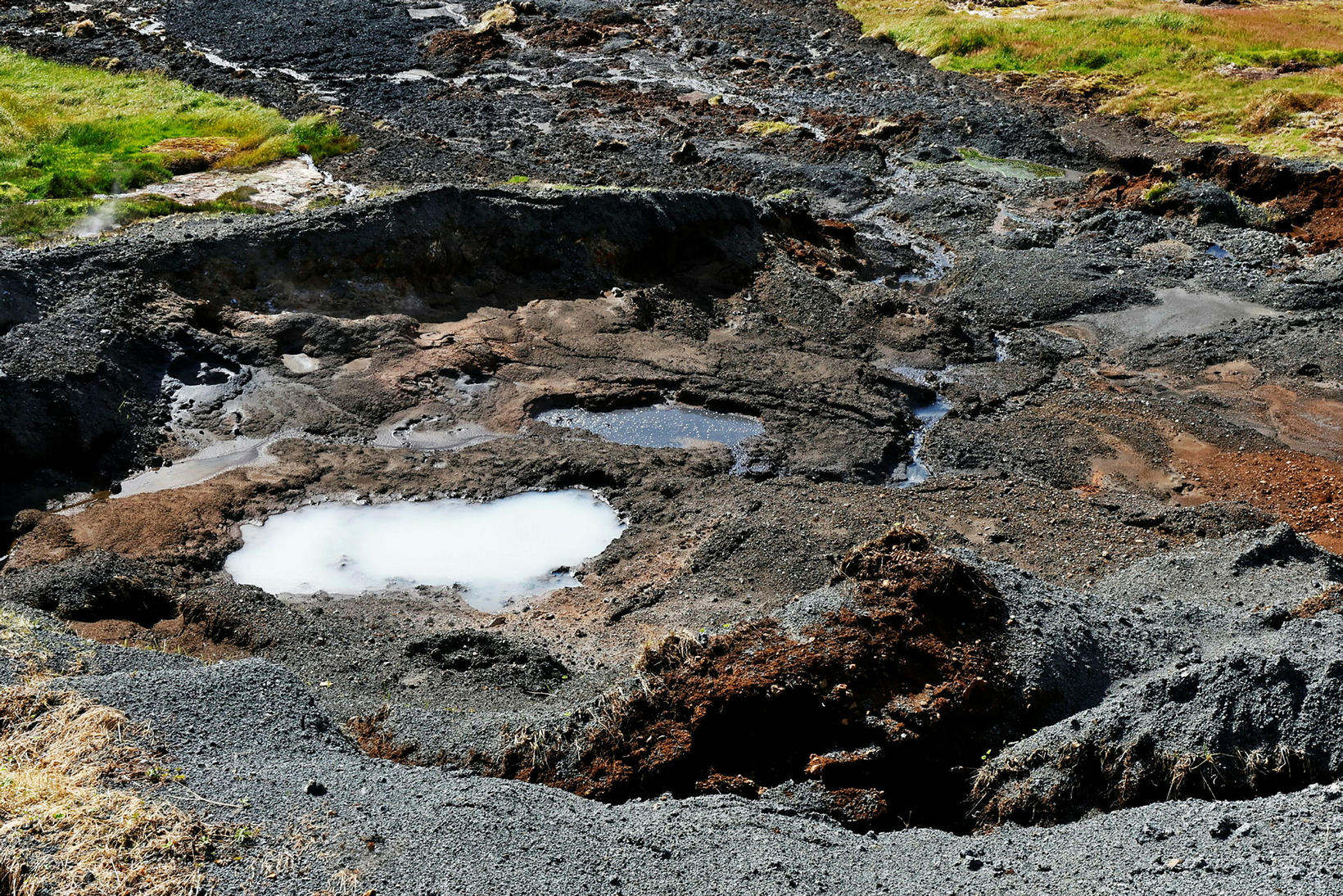
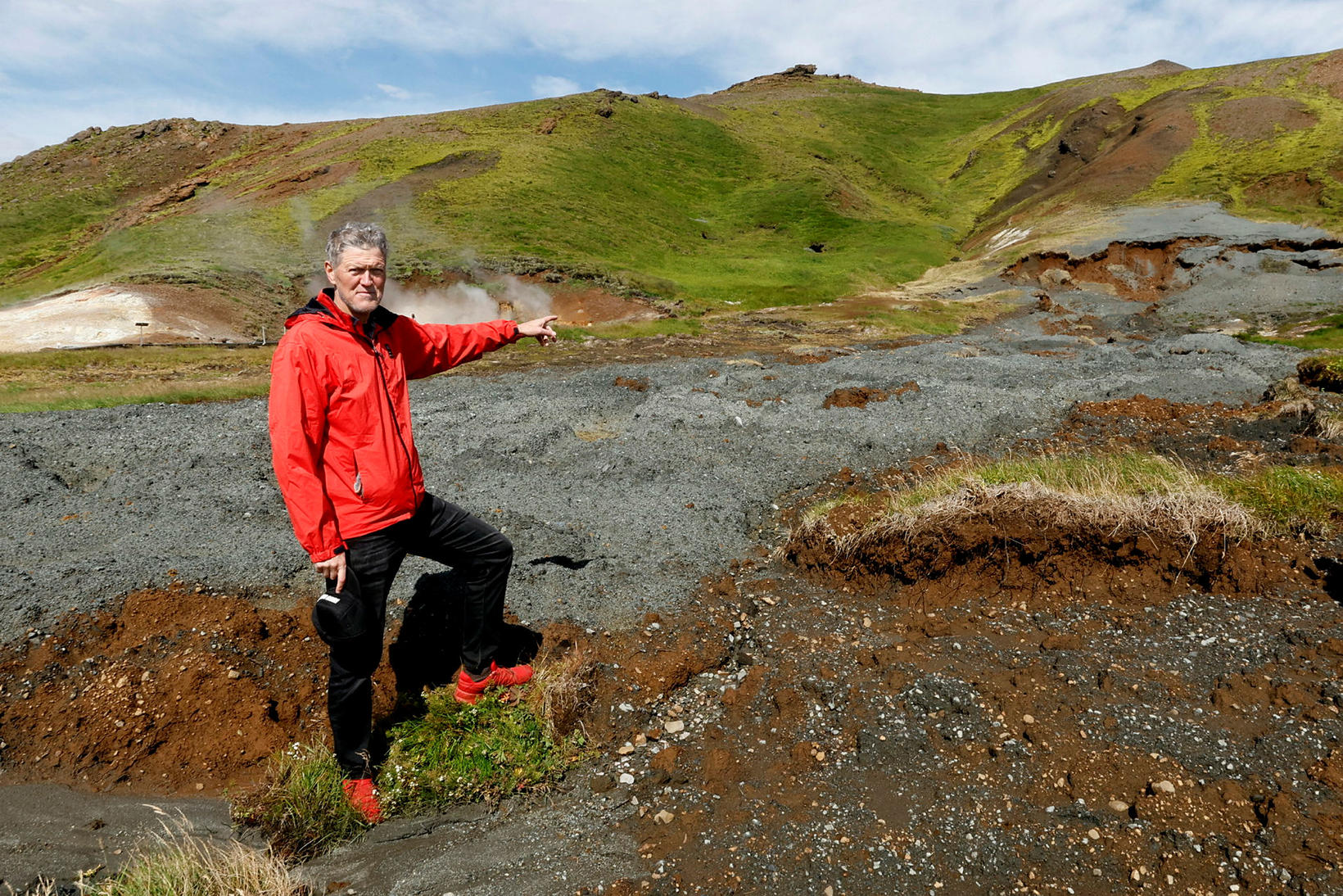
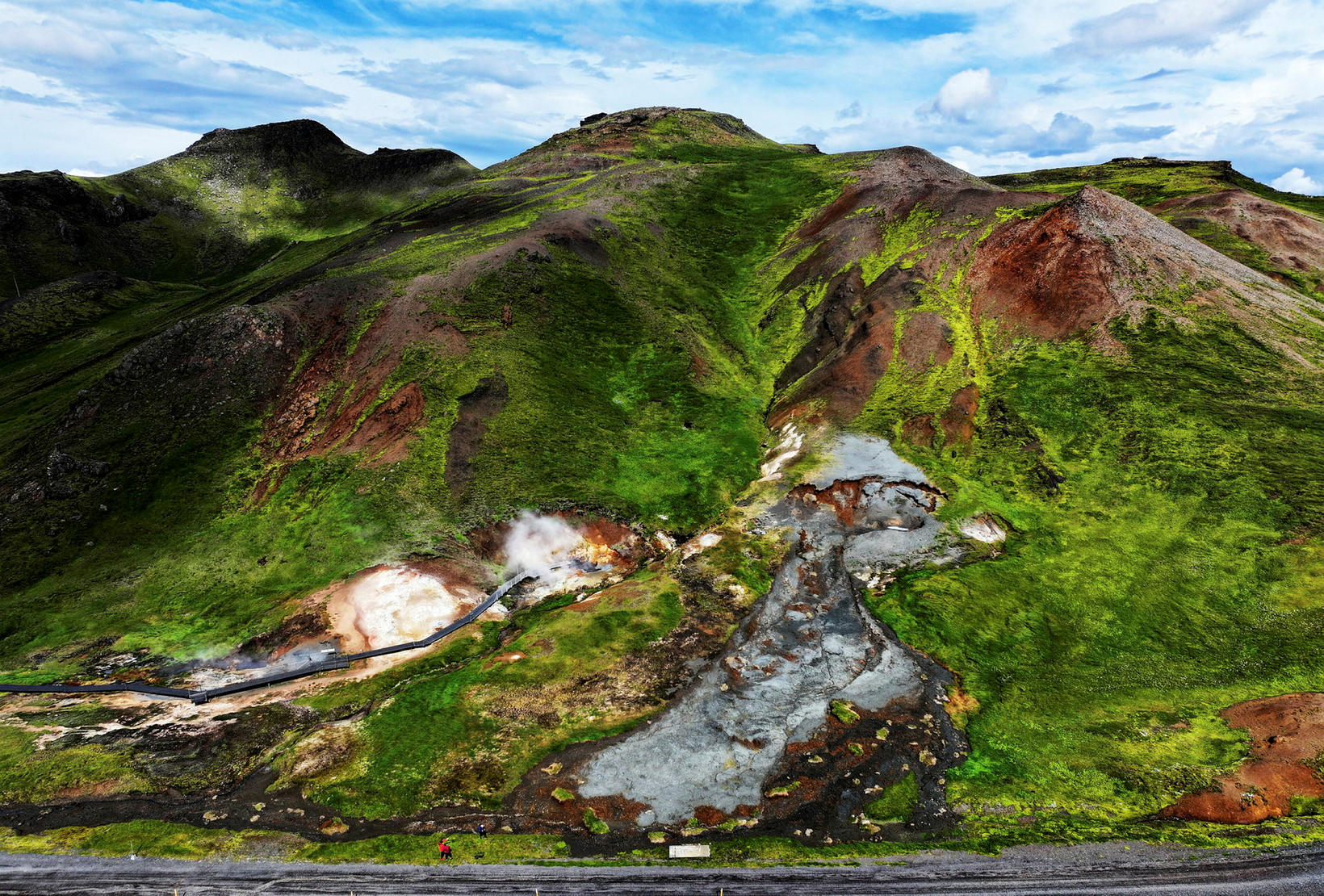
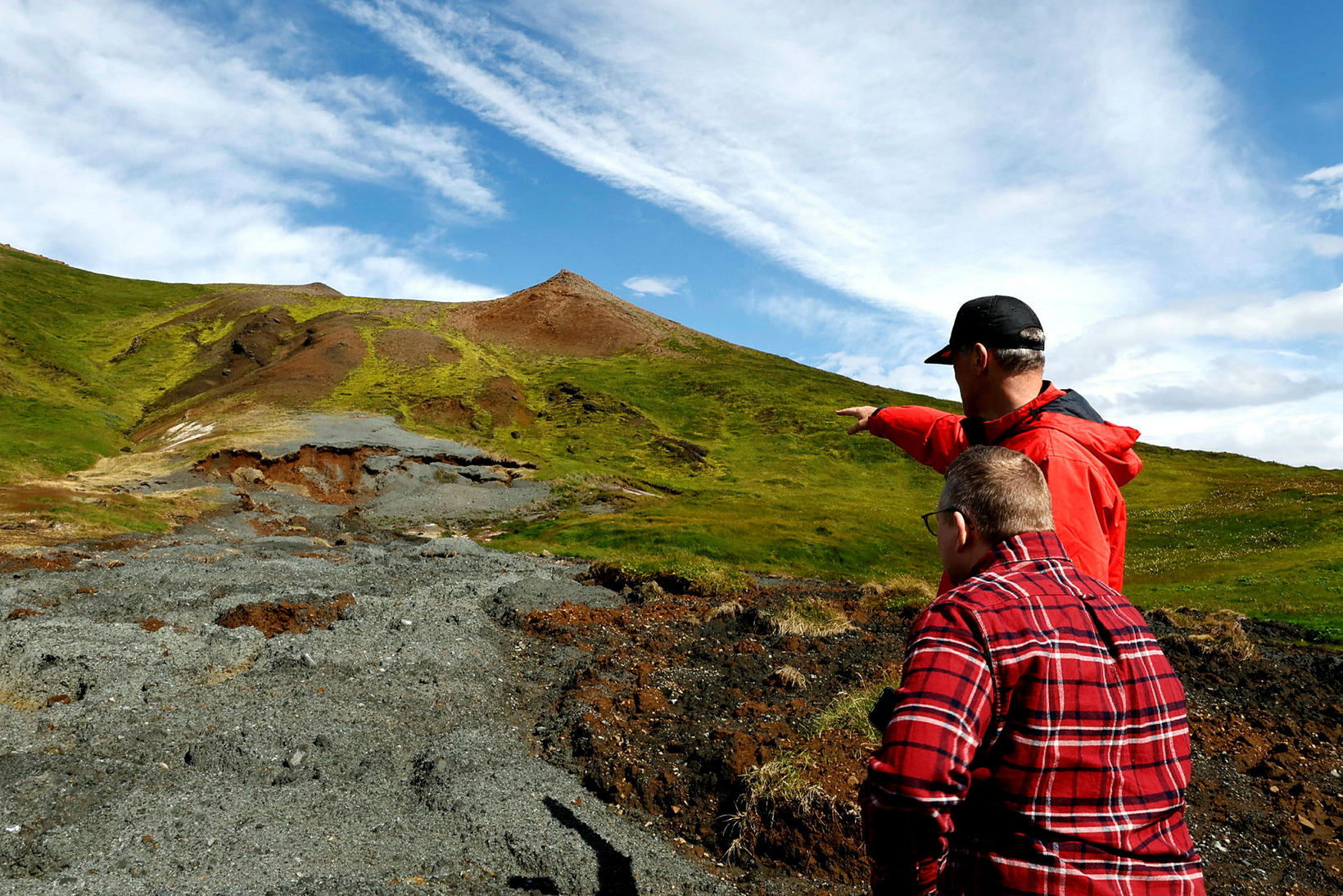
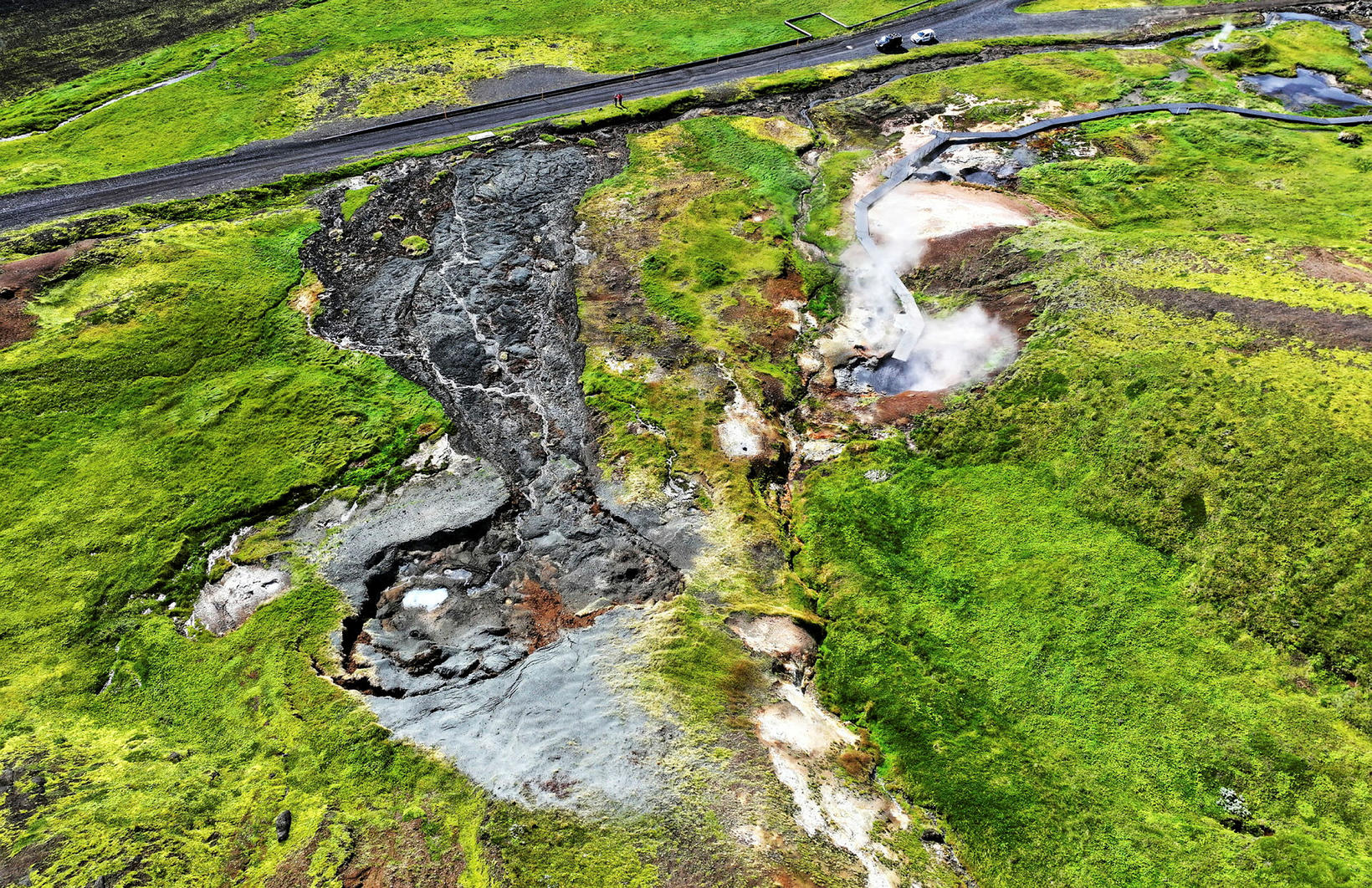
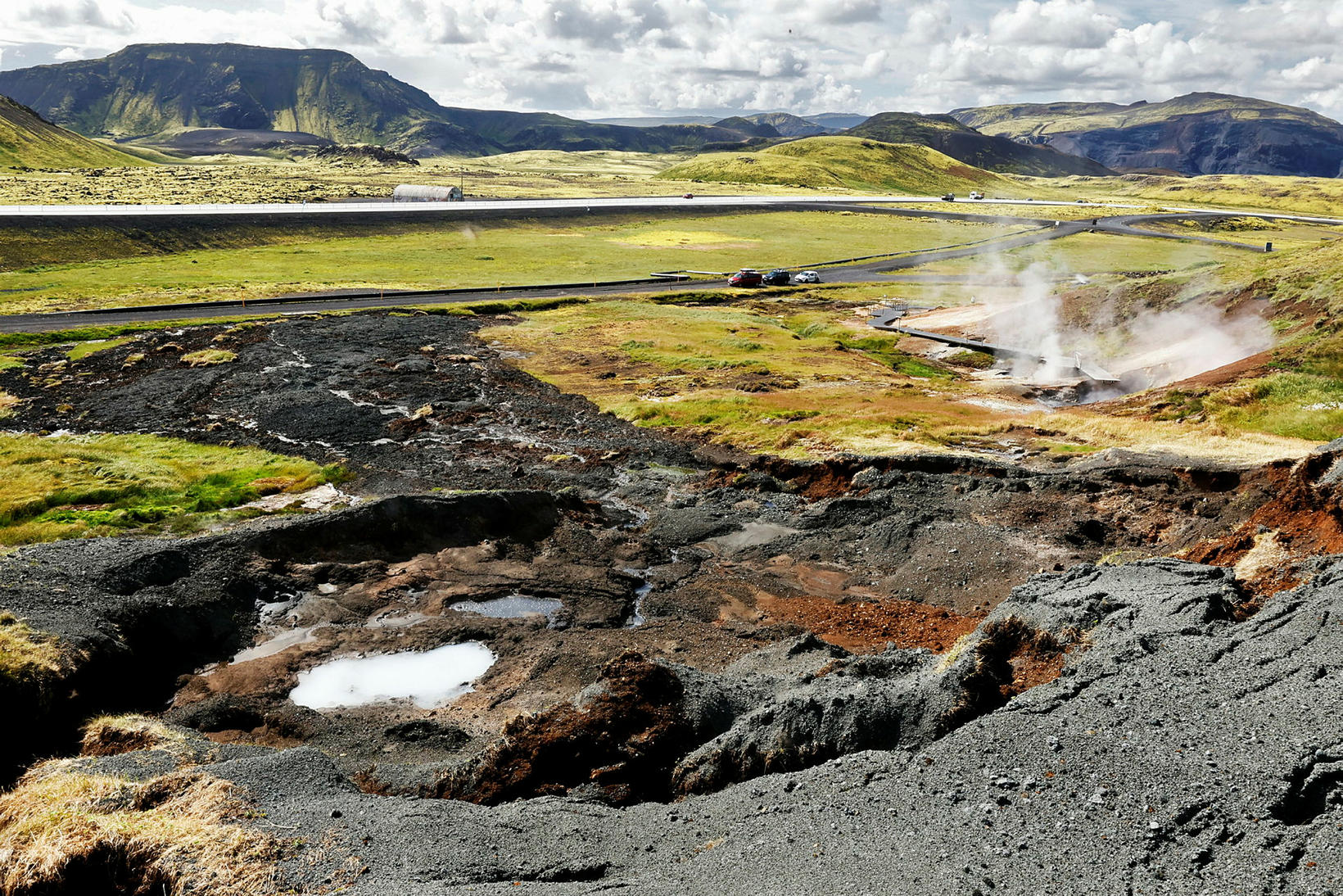
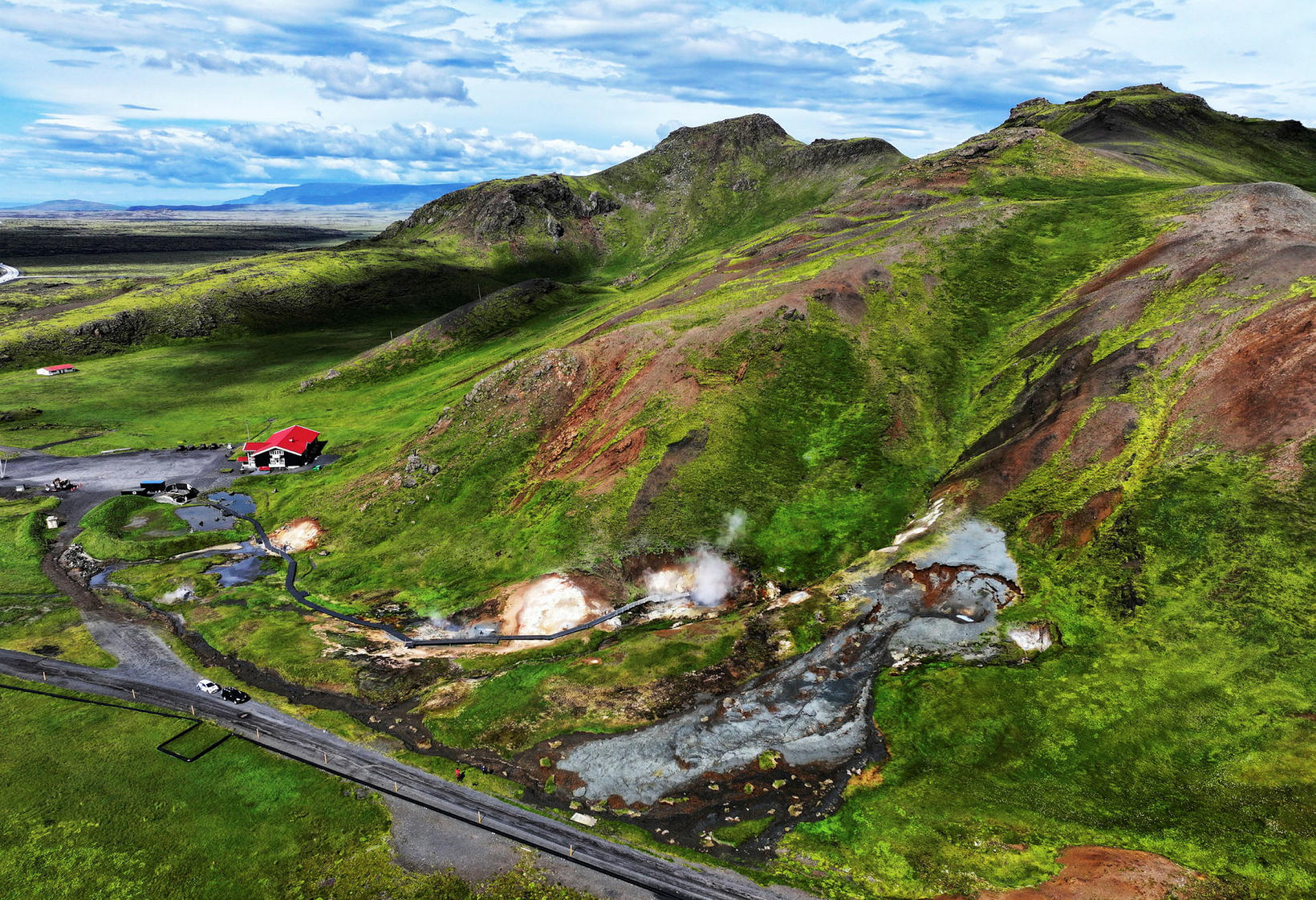


/frimg/1/57/87/1578747.jpg)



